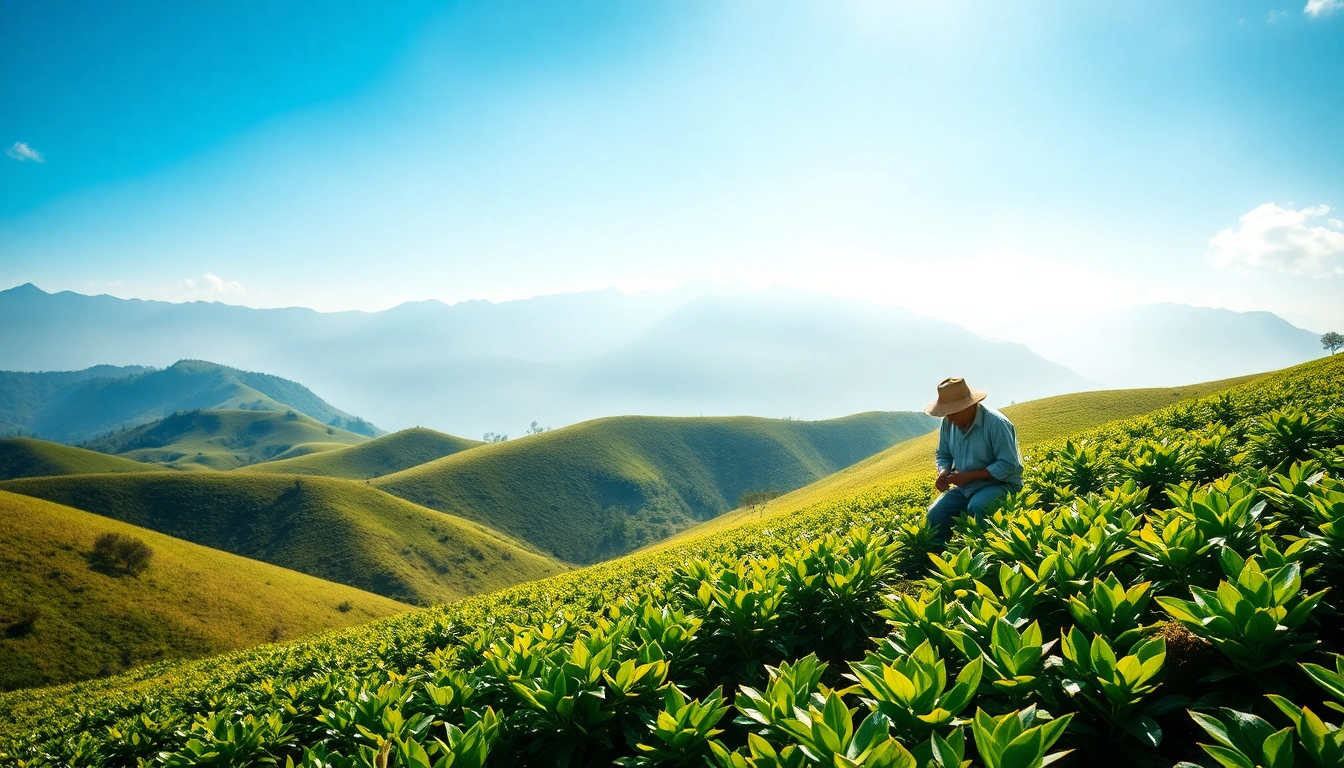
The Unique Characteristics of Nepal Tea
Nepal tea is emerging as a distinguished player in the global tea market, thanks to its unique characteristics and flavors that set it apart from its more famous counterparts, such as Darjeeling tea. Grown in the high-altitude regions of Nepal, these teas boast a distinctive aroma and flavor profile, which can be attributed to the specific climatic and soil conditions in which they thrive. The country’s varied geography, from lush hills to rugged mountains, creates microclimates conducive to high-quality tea cultivation. Notably, tea lovers are flocking to seek out the exceptional quality of Nepal tea, often described as vibrant and fresh due to the careful craftsmanship behind its production.
The Growing Regions of Nepal Tea
Nepal is home to several premier tea-growing regions, each offering its unique terroir, which reflects directly in the flavor and quality of the tea produced. Some of the prominent regions include:
- Ilam: Often referred to as the heart of Nepalese tea production, Ilam features lush green terraces and favorable climatic conditions conducive to cultivating both black and green teas. The high elevation enhances the tea’s flavor profile, giving it a distinctive sweetness.
- Makwanpur: Located south of Kathmandu, this region produces some excellent CTC (Cut, Tear, Curl) teas, known for their robust flavor and dark color, making them perfect for strong brews.
- Kanchanjangha: Nestled near the iconic Kanchanjangha mountain, teas from this area are organically grown at high altitudes, resulting in extraordinary aromas and complex flavors.
Taste Profiles and Varietals
Nepal’s tea varieties cater to a broad range of palates. Among the most notable are:
- Black Tea: Nepal produces a variety of orthodox black teas that are finely crafted to deliver sweetness and gentle astringency, often with floral and fruity undertones.
- Green Tea: The green teas from Nepal are lightly oxidized, showcasing a fresh and grassy flavor with a smooth finish, making them appealing to health-conscious drinkers.
- Herbal Teas: Infusions using local herbs and flowers provide a unique experience, with flavors that are deeply rooted in Nepalese culture and tradition.
The Impact of Altitude on Flavor
The altitude at which Nepalese tea is grown plays a critical role in its flavor development. Higher elevations lead to slower leaf growth, which allows for a more complex flavor profile as the leaves develop essential oils over a more extended period. Teas grown at altitudes above 1,200 meters are particularly notable for their fruity and floral notes, often likened to the mineral-rich flavors of the famed Darjeeling. Additionally, the cooler temperatures contribute to lower pest and disease pressures, promoting healthier tea plants and a cleaner taste in the final brew.
Health Benefits of Nepal Tea
Nepal tea not only pleases the palate but also offers a plethora of health benefits attributed to its rich natural compounds. The various types of teas, particularly black and green varieties, contain high levels of antioxidants, vitamins, and minerals that can enhance wellness and promote overall health.
Antioxidants in Nepal Tea
The antioxidant properties of Nepal tea are a significant reason for its growing popularity. Antioxidants such as flavonoids help combat oxidative stress and protect the body from damage caused by free radicals. Drinking tea regularly has been linked to improved cardiovascular health, enhanced brain function, and a lowered risk of chronic diseases. The unique environmental conditions of Nepal ensure that its teas have higher levels of these beneficial compounds compared to many other varieties globally.
Boosting Wellness with Herbal Varieties
In addition to traditional black and green teas, herbal teas from Nepal present a unique opportunity to boost wellness. These infusions might include ingredients like ginger, turmeric, or local flowers like marigold, each known for its health-enhancing properties. For example, ginger tea is widely recognized for its anti-inflammatory properties and ability to aid digestion, while a local herbal blend might boost immunity and promote relaxation.
The Role of Nepal Tea in Traditional Medicine
For centuries, tea has played a crucial role in Nepalese culture, not just as a beverage but as an integral part of traditional medicine. Various blends are used to treat ailments ranging from colds to digestive problems. The practice of preparing and consuming herbal teas is steeped in ancient knowledge, which emphasizes the importance of natural ingredients and their healing properties.
How to Brew the Perfect Cup of Nepal Tea
The art of brewing Nepal tea lies in understanding the leaves’ nuances and the infusion method. Here’s how to optimize your brewing process to enjoy the best flavors from this remarkable beverage.
Choosing the Right Tea Leaves
The selection of tea leaves is fundamental to brewing a perfect cup of Nepal tea. When choosing, consider the following:
- Type of Tea: Select a tea type that matches your preference—black, green, or herbal.
- Quality: Look for loose leaf teas as they typically provide better flavor than pre-packaged tea bags.
- Origin: Ensure the tea is sourced from reputable farms in Nepal, known for organic practices and quality production.
Step-by-Step Brewing Instructions
To brew the perfect cup, follow these steps:
- Measure: Start with one teaspoon of loose leaf tea per cup (8 ounces) of water.
- Water Temperature: Heat water to the appropriate temperature—about 200°F (93°C) for black tea and 175°F (80°C) for green tea.
- Steep: Pour hot water over the tea leaves and let them steep. Black tea typically takes 3-5 minutes, while green tea needs about 2-3 minutes.
- Strain: Remove the tea leaves using a strainer, and your drink is ready to enjoy. Sweeten to taste if desired.
Common Mistakes to Avoid
A few common mistakes can dampen your tea experience:
- Using water that is too hot, especially for delicate green teas.
- Over-steeping, which can lead to bitterness.
- Using expired tea leaves, which may lose flavor and aroma.
Buying Nepal Tea: What to Look For
When purchasing Nepal tea, it’s crucial to be informed to ensure quality. There are several considerations and tips when selecting the right product.
Identifying Authentic Nepalese Brands
To guarantee you are buying genuine Nepal tea, research and look for brands with a solid reputation. Authentic producers will often provide information about their farming practices, tea origins, and certifications. Choosing certified organic teas can also assure you that no harmful pesticides have been used in growing the tea.
Understanding Labels and Certifications
Paying attention to the labels can provide you with valuable information about the tea’s quality. Look for certifications indicating the tea is organic, fair trade, or sustainably sourced. These labels reflect a commitment to ethical practices and often correlate with higher-quality products.
Where to Buy Quality Nepal Tea
Quality Nepal tea can be purchased directly from specialty tea retailers online or physical storefronts that focus on organic and high-quality products. Some recommended options include local tea shops, organic food stores, or reputable online retailers that specialize in imported teas.
Brewing Nepal Tea in Different Styles
Nepal tea can be enjoyed in various formats beyond just a simple cup, each emphasizing its unique flavors and characteristics. Here are some popular methods of preparation.
Traditional Nepali Chai Recipe
Nepali chai is a beloved traditional beverage that combines various spices with black tea. Here’s a simple recipe:
- Boil 2 cups of water with 1 tablespoon of tea leaves.
- Add sugar and spices (like cardamom, ginger, or cinnamon) to taste.
- After 5 minutes, add 1 cup of milk and bring it back to a boil.
- Strain and serve hot.
Modern Variations and Recommendations
Contemporary tea enthusiasts are experimenting with Nepal tea in unique ways. Consider creating a Nepal tea latte by aerating frothed milk with a shot of brewed tea or blending herbal teas with superfoods like turmeric or spirulina for added health benefits.
Creating Iced Nepal Tea for Summer
As summer approaches, iced Nepal tea becomes an excellent refreshing drink. Brew the tea as usual, allow it to cool, and pour it over ice. For added flavor, infuse with fresh fruits or herbs like mint for a revitalizing beverage.






